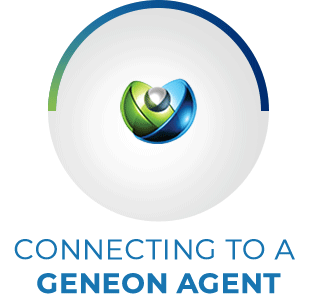February 07, 2019 Leave a Comment
You've heard the word 'disinfect" and you've heard the word "sanitize." Is there a difference between the two? Basically, sanitizing is a process that kills almost all germs, where disinfecting kills all germs. Kitchens and restaurants typically sanitize while hospitals will disinfect, particularly areas where there has been an occurrence of blood and other bodily fluids. Disinfectants are typically stronger than sanitizing solutions because they are meant to completely destroy the bacteria.
Can Bleach Disinfect?
Yes, bleach is a disinfectant. In fact, it is a strong disinfectant and is considered highly effective because the active ingredient is sodium hypochlorite, which alters and takes away protein in micro-organisms, making it effective for killing all types of bacteria, fungus, and viruses. The EPA actually describes a method for using household chlorine bleach for disinfecting water for human consumption in emergency situations, such as hurricanes. Bleach is one of those household ingredients that many DIY methods suggest using for a range of cleaning and sanitizing, including whitening tile grout, making clothes white, removing stains, etc. But, are there any dangers associated with bleach, though, and is bleach really the right choice for major disinfecting?Dangers of Using Bleach as a Disinfectant and Cleaner
While there is no doubt bleach cleans and disinfects, there are many health issues associated with bleach that people don't think about. Many institutions automatically turn to bleach without considering the health risks involved. There's no question that bleach can be toxic if ingested, but even beyond this obvious point, bleach can be harmful. According to the EPA, bleach can emit fumes long after it has been used on a surface. These fumes, over time, can have negative effects on the health of employees where bleach is used as a primary disinfection method. The EPA goes on to state that people who have been exposed to bleach regularly are susceptible, and even more likely, to have respiratory illness. Some studies have even linked bleach to a higher instance of asthma and allergies.
Disinfecting Without Bleach
There are various DIY methods that can be used as a replacement for bleach. Hydrogen peroxide and white vinegar form the basis of many of these home solutions. Some of them work well as cleaners and can even kill a majority (up to 80% - leaving the surviving 20% to grow stronger creating superbugs) of some germs and bacteria. They are not as effective as bleach, of course, but they also don't pose the health risks of bleach either. One example of using these two ingredients together is to spray kitchen surfaces or areas where food is processed with vinegar and let it sit several minutes, then spray the same surface with hydrogen peroxide and let it sit a few minutes. According to the FDA and EPA, the combination of these two ingredients forms peracetic acid, which is a killer of salmonella, E. coli, and listeria.Better Options for Living Clean
Maybe you've heard about GenEon and about our advanced cleaning, sanitizing, and disinfecting solutions for schools, office buildings, and businesses. Our on-site generation allows consumers to safely generate cleaning, sanitizing, and disinfecting solutions as they need them, without the need to store and mix chemicals that could be dangerous. That's because our products are created using our on-site technology and use only energy, water, and minerals to create safer, effective solutions for sanitizing and disinfecting. This means getting the same results you would with bleach and other cleaning and sanitizing products without the threat posed by store-bought products.How Does It Work?
Our products are created using On-Site Generators (OSG) technology. This method produces powerful cleaning, degreasing and sanitizing solutions from minerals, water, and electricity with a technology called electrochemically activated water (ECA) or electrolyzed water (EO). Natural minerals i.e. salt is a compound comprised of sodium and chloride. The sodium ions are positively charged while the chloride ions are negatively charged. Our GenEon Onsite Generators then expose these ions to a low electrical charge. The positive side of the charge electrochemically converts the chloride ion (Cl) to hypochlorous acid (HOCl), which is a powerful sanitizer. The negative side of the charge electrochemically converts the sodium ion (Na) into sodium hydroxide (NaOH), a cleaning compound often found in soaps and detergents.


